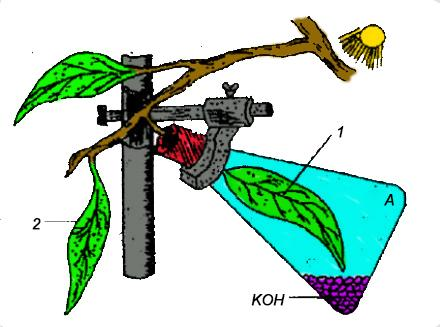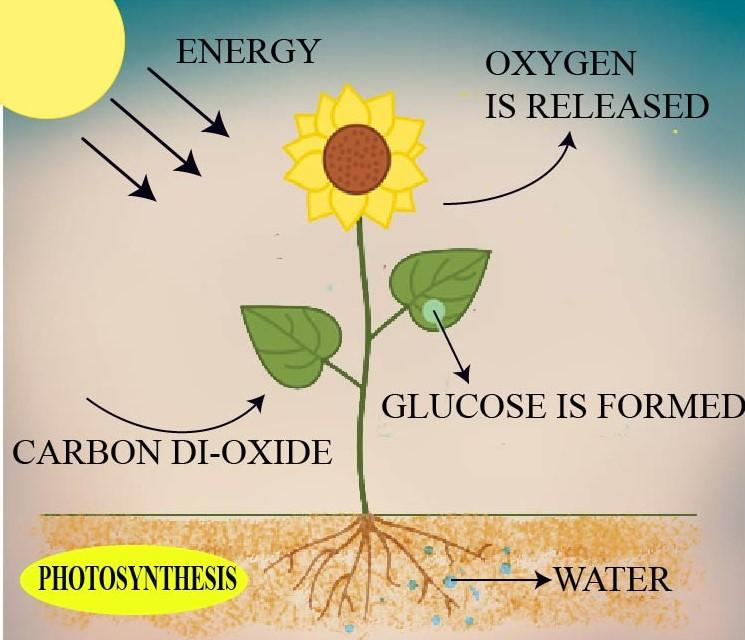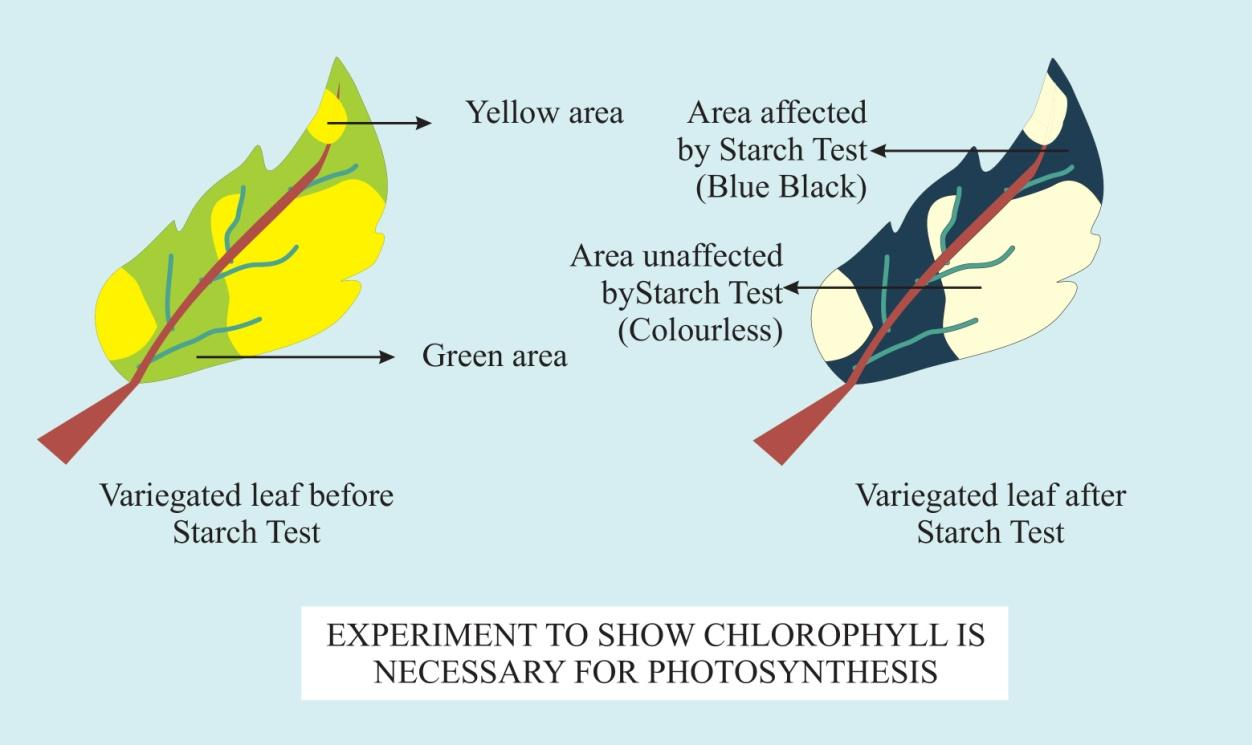
The figure given below represents an experiment to demonstrate a particular aspect of photosynthesis. The alphabet ‘A’ represents a certain condition inside the flask.

(i) What is the aim of the experiment?
(ii) Identify the special condition inside the flask.
(iii) Name an alternative chemical that can be used instead of KOH.
(iv) In what manner do leaves 1 and 2 differ at the end of the starch test?

Answer
473.4k+ views
Hint: The purpose of the experiment is to define the need for a greenhouse gas for the photosynthesis process. Inside the flask, the unique state is the lack of a compound whose solid shape is called dry ice. As an alternate chemical for KOH, carbonate products, caustic soda, etc. may be used.
Complete answer:
(i) The purpose of the experiment is to demonstrate the requirement of $C{ O }_{ 2 }$ for the photosynthesis process.
(ii) In the flask, the unique condition is that there is no $C{ O }_{ 2 }$ in the air within the flask as all carbon dioxide is removed by the KOH. Thus, the leaf does not receive ambient $C{ O }_{ 2 }$ within the flask.
(iii) The alternative chemicals that can be used instead of KOH are soda lime (NaOH & $Ca\left( { OH }_{ 2 } \right) $) , CaO (limestone) , and potassium pyrogallate.
(iv) The absence of $C{ O }_{ 2 }$ inside the flask does not allow the starch to be produced by leaf 1, and at the end of the starch test, the leaf does not turn black while leaf 2 turns black.


Carbon dioxide is a chemical compound that consists of one carbon and two atoms of oxygen. At a low concentration, it is found in the Earth's atmosphere and functions as a greenhouse gas, and its solid-state is called dry ice.
Limestone is a carbonate sedimentary rock consisting primarily of skeletal fragments of certain marine organisms. Example: Corals. The minerals calcite and aragonite, which are various crystal types of calcium carbonate $\left( CaC{ O }_{ 3 } \right) $, are its main materials.
Sodium hydroxide is an inorganic compound with the formula NaOH, also known as lye and caustic soda.
The iodine-starch test is a chemical reaction used to test for iodine or for the presence of starch.
Note: Photosynthesis is the process used by plants, algae, and some bacteria to harness energy from sunlight and turn it into chemical energy. The mechanism by which green plants and many other species turn light energy into chemical energy is photosynthesis. Light energy is consumed and used during photosynthesis in green plants to turn water, carbon dioxide, and minerals into oxygen and energy-rich organic compounds.
Complete answer:
(i) The purpose of the experiment is to demonstrate the requirement of $C{ O }_{ 2 }$ for the photosynthesis process.
(ii) In the flask, the unique condition is that there is no $C{ O }_{ 2 }$ in the air within the flask as all carbon dioxide is removed by the KOH. Thus, the leaf does not receive ambient $C{ O }_{ 2 }$ within the flask.
(iii) The alternative chemicals that can be used instead of KOH are soda lime (NaOH & $Ca\left( { OH }_{ 2 } \right) $) , CaO (limestone) , and potassium pyrogallate.
(iv) The absence of $C{ O }_{ 2 }$ inside the flask does not allow the starch to be produced by leaf 1, and at the end of the starch test, the leaf does not turn black while leaf 2 turns black.


Carbon dioxide is a chemical compound that consists of one carbon and two atoms of oxygen. At a low concentration, it is found in the Earth's atmosphere and functions as a greenhouse gas, and its solid-state is called dry ice.
Limestone is a carbonate sedimentary rock consisting primarily of skeletal fragments of certain marine organisms. Example: Corals. The minerals calcite and aragonite, which are various crystal types of calcium carbonate $\left( CaC{ O }_{ 3 } \right) $, are its main materials.
Sodium hydroxide is an inorganic compound with the formula NaOH, also known as lye and caustic soda.
The iodine-starch test is a chemical reaction used to test for iodine or for the presence of starch.
Note: Photosynthesis is the process used by plants, algae, and some bacteria to harness energy from sunlight and turn it into chemical energy. The mechanism by which green plants and many other species turn light energy into chemical energy is photosynthesis. Light energy is consumed and used during photosynthesis in green plants to turn water, carbon dioxide, and minerals into oxygen and energy-rich organic compounds.
Recently Updated Pages
The correct geometry and hybridization for XeF4 are class 11 chemistry CBSE

Water softening by Clarks process uses ACalcium bicarbonate class 11 chemistry CBSE

With reference to graphite and diamond which of the class 11 chemistry CBSE

A certain household has consumed 250 units of energy class 11 physics CBSE

The lightest metal known is A beryllium B lithium C class 11 chemistry CBSE

What is the formula mass of the iodine molecule class 11 chemistry CBSE

Trending doubts
State the laws of reflection of light

One Metric ton is equal to kg A 10000 B 1000 C 100 class 11 physics CBSE

Difference Between Prokaryotic Cells and Eukaryotic Cells

How do I convert ms to kmh Give an example class 11 physics CBSE

Describe the effects of the Second World War class 11 social science CBSE

Which of the following methods is suitable for preventing class 11 chemistry CBSE




